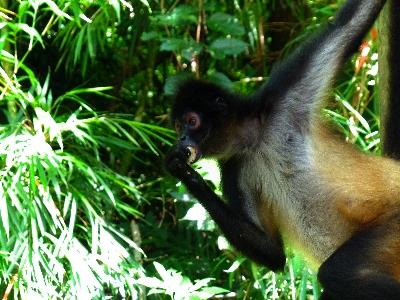Abstract

For frugivorous primates, the ability to discriminate between fruit odours, and of different degrees of ripeness in particular, should be important for an efficient food selection based on its nutritional value. It was therefore the aim of the present study to assess the ability of spider monkeys (Ateles geoffroyi), a frugivorous New World primate species, to discriminate between the odours of ripe and unripe fruits, and between odours representing different degrees of ripeness. A two-choice instrumental conditioning paradigm was used in which five spider monkeys were presented with odour mixtures mimicking different degrees of ripeness of two neotropical fruits, Leonia cymosa (Violaceae) and Couma macrocarpa (Apocynaceae). The results showed that spider monkeys were able to discriminate between the ripe and unripe odours of these two fruits and also between the majority of their variations during the ripening process. This supports the notion that spider monkeys may use olfactory cues for food selection.
Responsible for this page:
Director of undergraduate studies Biology
Last updated:
05/21/15
